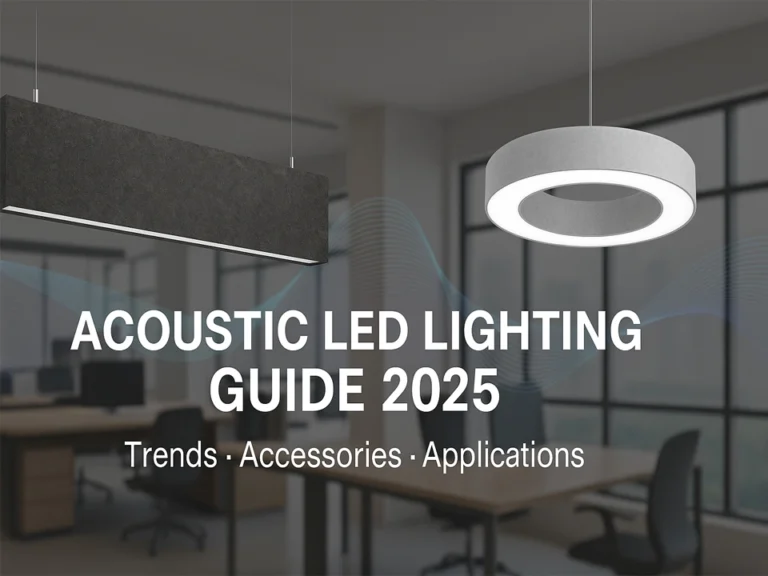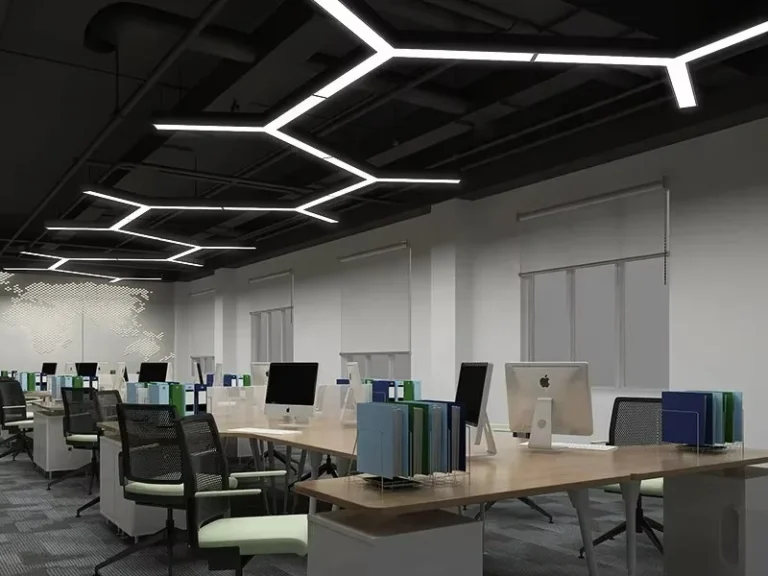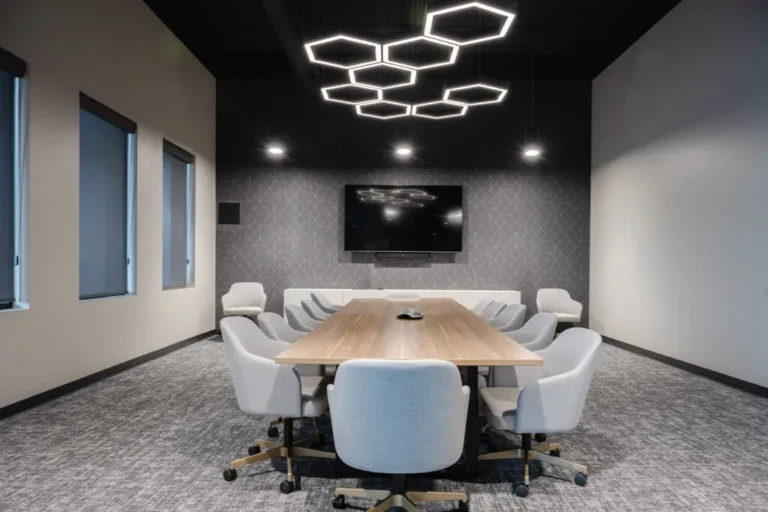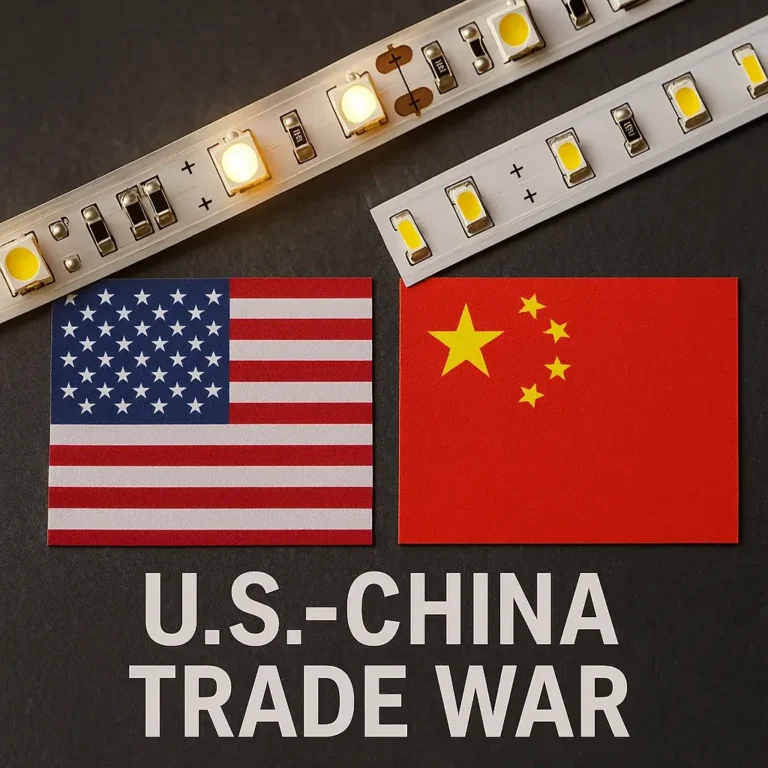Wyobraź sobie, że wchodzisz do nowoczesnego holu biurowego, w którym czyste linie światła płynnie wtapiają się w sufit, rzucając równomierny, przyjazne blask. W innej przestrzeni minimalistyczne oprawy liniowe wiszą z wdziękiem nad wspólnymi biurkami, subtelnie definiując strefy bez ścian. W dół szpitalnego korytarza jasne światła natynkowe zapewniają widoczność i bezpieczeństwo przez całą dobę.
Wszystkie trzy przestrzenie wykorzystują oświetlenie liniowe LED — ale z bardzo różnymi metodami instalacji. Wybór między wpuszczanym, zawieszonym i montowanym na powierzchni to nie tylko decyzja techniczna. Chodzi o to, jak światło wchodzi w interakcję z przestrzenią, jak projekt czuje się dla osób z niego korzystających i jak płynnie dopasowuje się do intencji architektonicznych.
Jak więc zdecydować, który z nich pasuje do Twojego projektu?
Dlaczego metoda instalacji ma znaczenie w komercyjnym oświetleniu liniowym
W komercyjnym oświetleniu profile liniowe LED to nie tylko elementy funkcjonalne — są to elementy architektoniczne, które kształtują wygląd i styl przestrzeni. Wybór odpowiedniej metody instalacji wpływa nie tylko na wygląd. Wpływa na dystrybucję oświetlenia, koszt instalacji, dostępność konserwacji, a nawet na to, jak łatwość systemu jest w przyszłości.
Dla architektów, projektantów i kierowników projektów zrozumienie podstawowych różnic między instalacjami wpuszczanymi, zawieszonymi i natynkowanymi jest niezbędne do zapewnienia dobrej przestrzeni – i wygląda jeszcze lepiej.
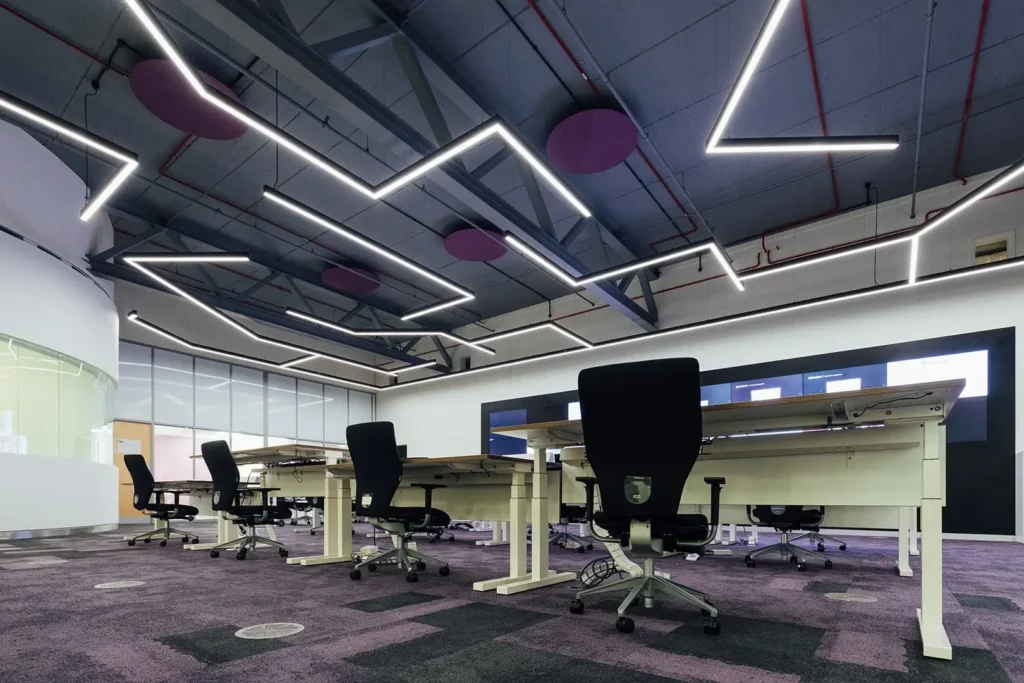
Jakie są główne metody instalacji profili liniowych LED?
Jeśli chodzi o komercyjne oświetlenie liniowe LED, sposób zainstalowania oprawy może dramatycznie wpłynąć zarówno na estetykę, jak i na funkcję przestrzeni. Przyjrzyjmy się bliżej trzem podstawowym typom montażu — wpuszczonym, zawieszonym i montowanym na powierzchni — oraz tym, jak każdy z nich kształtuje decyzje projektowe oświetlenia.
Montaż wpuszczany
Czysty. Bezszwowy. Niewidzialny.
Wpuszczane oświetlenie liniowe jest instalowane równo w sufitach, ścianach lub meblach. Korpus profilu jest ukryty, pozostawiając tylko cienią linię światła widoczną — idealną do projektów mających na celu minimalistyczny lub architektoniczny wygląd.
Ta metoda jest często preferowana w przestrzeniach, w których wizualny bałagan musi zostać zredukowany, w przeciwnym razie oświetlenie ma uzupełniać – a nie dominować – projekt. Jest to popularny wybór w korytarzach hotelowych, biurach, muzeach i luksusowych środowiskach handlowych.
Ale istnieje kompromis: instalacja wpuszczana zazwyczaj wymaga wczesnego planowania na etapie budowy. Dokładne wymiary, koordynacja strukturalna i bardziej złożone etapy instalacji oznaczają, że nie jest to idealne rozwiązanie do projektów modernizacyjnych — ale jeśli są wykonane prawidłowo, wyniki mówią same za siebie.
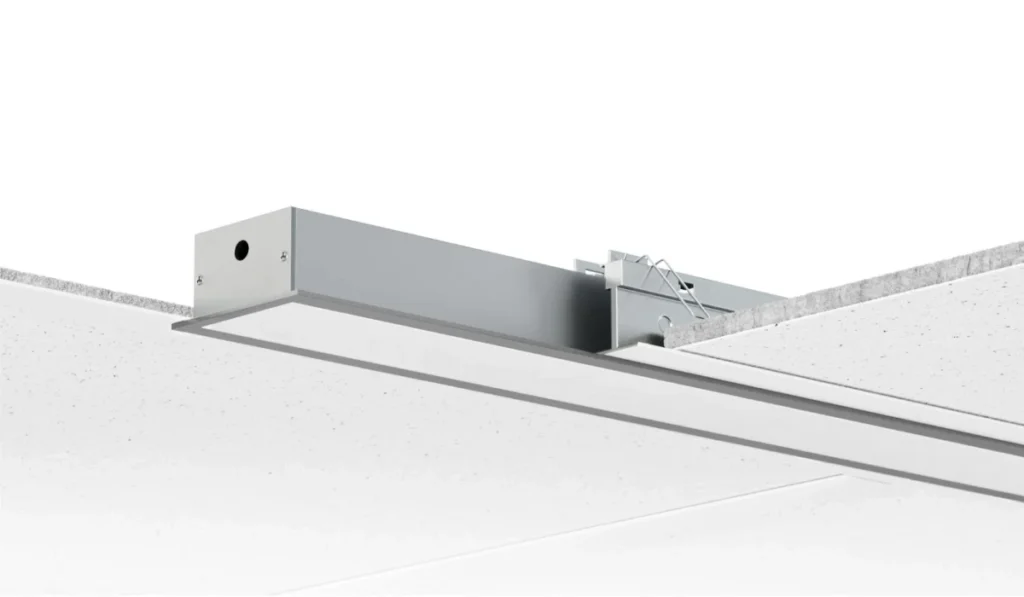
Montaż podwieszany
Elastyczny. rzeźbiarski. ekspresyjna.
Zawieszone oświetlenie liniowe dodaje wizualnej obecności. Wisi na sufitach za pomocą drutów lub prętów, tworząc głębię i definicję w przestrzeni. Takie podejście jest szczególnie skuteczne w biurach na planie otwartym, recepcjach, salach lekcyjnych lub sklepach detalicznych z wyższymi sufitami.
Zawieszone instalacje dają projektantom większą swobodę w regulacji wysokości światła, tworzenia rytmu, a nawet zabawy wzorami — myślenie ciągłych przebiegów, skrzyżowań lub układów zygzakowatych. Jest to również praktyczne, gdy sufit nie pozwala na wpuszczanie lub gdy chcesz użyć oświetlenia jako funkcji projektowej.
W porównaniu z montażem wpuszczanym, podwieszane światła są łatwiejsze do zainstalowania i regulacji, ale wymagają przemyślanego wyrównania i kontroli napięcia, aby utrzymać czystą linię wizualną.
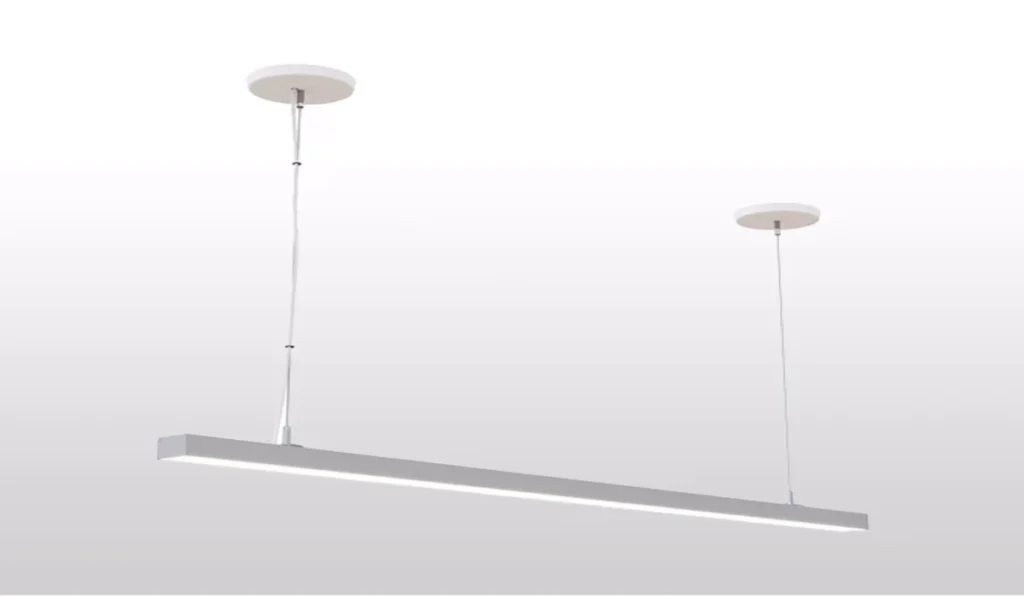
montowany powierzchniowo
Proste. Bezpośrednio. Wszechstronny.
Montaż na powierzchni jest najprostszą metodą — profil liniowy jest przymocowany bezpośrednio do płaskiej powierzchni, takiej jak sufit lub ściana. Jest to idealne rozwiązanie do projektów remontowych, pomieszczeń gospodarczych lub dowolnego środowiska, w którym modyfikacja strukturalna jest niewykonalna.
Chociaż może brakować bezszwowego wyglądu wpuszczanego oświetlenia, montaż na powierzchni rekompensuje to łatwość instalacji, niższe koszty pracy i dostępność konserwacji. Jest to niezawodna opcja, gdy czas jest napięty lub konstrukcja sufitu jest solidnym betonem.
Dzisiejsi projektanci często łączą natynkowe światła liniowe z nowoczesnymi wykończeniami i smukłymi profilami, aby stworzyć czystą, celową estetykę — zwłaszcza w projektach edukacyjnych, medycznych i przemysłowych.
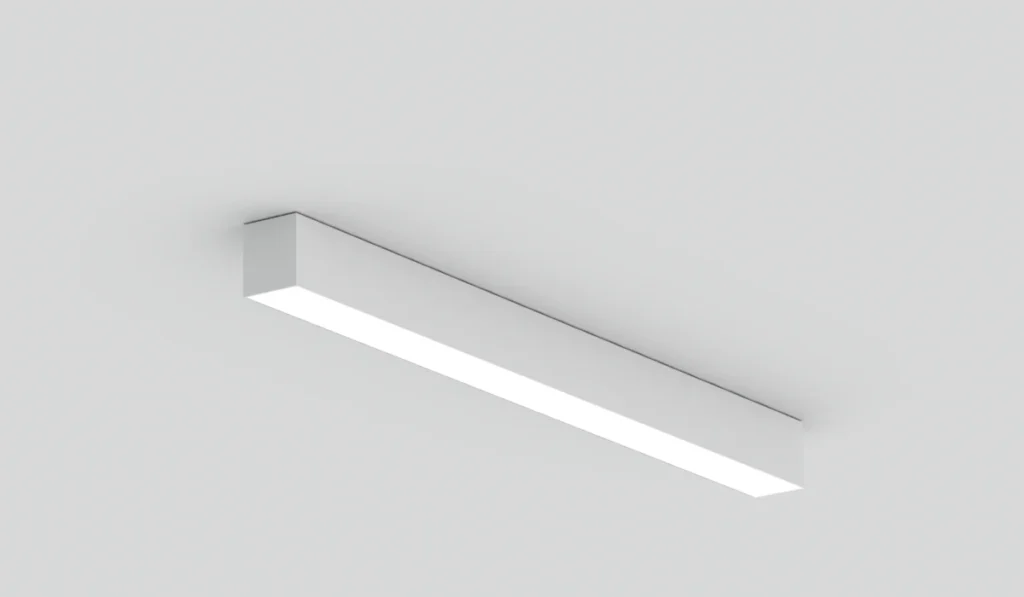
| Typ instalacji | Kluczowe cechy | Zalety | Ograniczenia | Typowe zastosowania |
| wcale | Zainstalowane w suficie, ścianach lub meblach | - Czysty i bezszwowy wygląd - Minimalna wtargnięcie wizualne - Świetne dla nowoczesnych wnętrz | – Wymaga wstępnie zaplanowanych szczelin lub wnęk – Wyższa instalacja – niezłożoność instalacji – Elastyczne do modernizacji | Biura wysokiej klasy, korytarze hotelowe, muzea, sklepy detaliczne |
| wstrzymany | Zawieszony z sufitu za pomocą kabli lub prętów | - Regulowana wysokość - dodaje głębi i wizualnego rytmu - Idealny do wysokich sufitów | – Widoczna oprawa może wpływać na minimalne projekty – wymaga starannego wyrównania – potrzebuje odpowiedniego sufitu do zawieszenia | Biura na planie otwartym, recepcje, sklepy detaliczne, sale lekcyjne |
| montowany powierzchniowo | Montowane bezpośrednio na powierzchniach sufitowych lub ścian | – Szybka i łatwa instalacja – Niski koszt robocizny – Idealny do modernizacji | – Widoczna oprawa- mniej smukły niż wpuszczany-Może nie pasować do estetyki wysokiej klasy | Szpitale, szkoły, budynki odnowione, przestrzenie przemysłowe |
Jak wybrać odpowiednią opcję montażu w oparciu o potrzeby projektu
Nie każda liniowa oprawa LED jest zaprojektowana tak, aby obsługiwać wszystkie trzy typy instalacji.
Niektóre profile są zaprojektowane specjalnie do użytku wpuszczanego — z kołnierzami i sprężynami mocującymi, które blokują się w szczelinach gipsowo-kartonowych lub sufitowych. Inne są wyposażone w uchwyty powierzchniowe lub zestawy do zawieszania, dzięki czemu nadają się do zastosowań podwieszanych lub natynkowych, ale nie do konfiguracji osadzonych.
Więc zanim zastanowisz się, która metoda instalacji wygląda najlepiej, pierwsze pytanie powinno brzmieć:
Jakie opcje instalacji faktycznie obsługuje produkt oświetleniowy?
Po potwierdzeniu, że wybrana oprawa jest kompatybilna z wieloma metodami montażu – lub jeśli wybierasz z systemu modułowego – sensowne jest, aby ocenić, które podejście najlepiej pasuje do Twojego projektu.
Oto jak zdecydować, na podstawie rzeczywistych priorytetów oświetlenia komercyjnego:
Struktura przestrzeni i warunki sufitowe
Jeśli projekt ma sufit podwieszany lub konstrukcję płyt kartonowo-gipsowych, instalacja wpuszczana jest często idealnym wyborem do uzyskania bezproblemowego, zintegrowanego wyglądu. Jednak w betonowych sufitach lub przestrzeniach bez głębokości wnęki montaż natynkowy lub zawieszenie staje się bardziej praktyczne. W przypadku wysokich sufitów (3 m i więcej) zawieszone światła liniowe nie tylko rozwiązują wyzwania instalacyjne, ale także zwiększają równowagę wizualną.
Estetyczny styl i intencja projektowa
Oświetlenie to nie tylko jasność — to także język projektowania. W minimalistycznych lub współczesnych przestrzeniach wpuszczane oświetlenie liniowe pomaga utrzymać czyste linie wzroku i skupia się na architekturze i materiałach. Z drugiej strony często stosuje się profile podwieszane, gdy oświetlenie ma być widocznym elementem przestrzeni, na przykład w wnętrzach w stylu przemysłowym lub otwartych strefach współpracy. Kreatywne kształty — takie jak zygzakowate, okrągłe lub łukowe konfiguracje — prawie zawsze polegają na zawieszonym montażu, aby osiągnąć zarówno elastyczność, jak i wizualny rytm. Jeśli oprawa jest dwustronna lub zaprojektowana tak, aby zapewniać światło otoczenia w wielu kierunkach, zazwyczaj preferowane są instalacje zawieszone lub natynkowe, aby zapewnić optymalne rozłożenie światła i obecność w przestrzeni.
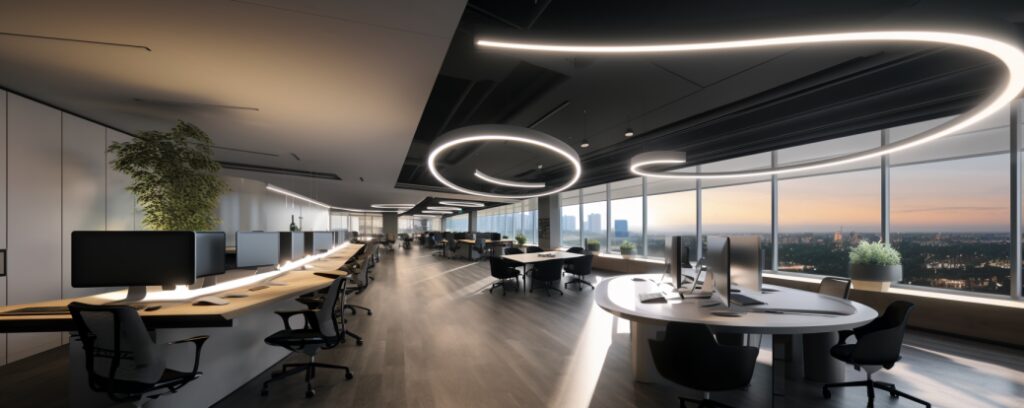
Wykonalność instalacji i warunki na miejscu
Montaż wpuszczany często wymaga wczesnej koordynacji z konstrukcjami sufitowymi lub ściennymi, dzięki czemu lepiej nadaje się do nowych konstrukcji lub projektów na wczesnych etapach budowy. W przypadku projektów modernizacyjnych lub szybkich, opcje nawierzchniowe lub zawieszone są bardziej praktyczne, ponieważ pozwalają uniknąć modyfikacji konstrukcyjnych i skrócić czas pracy. Gdy warunki czasowe lub terenowe są ograniczone, często wygrywa prostota.
Konserwacja i przyszła elastyczność
W pomieszczeniach komercyjnych, które wymagają łatwego dostępu do konserwacji — takich jak biura lub placówki opieki zdrowotnej — powierzchniowe lub zawieszone oprawy zapewniają lepszą dostępność w przypadku wymiany kierowcy lub modernizacji systemu. Instalacje wpuszczane, choć eleganckie, mogą później skomplikować naprawy lub zmiany układu. Rozważ zdolność adaptacji długoterminowej, a nie tylko pierwsze wrażenie.
Budżet i harmonogram projektu
Montaż na powierzchni jest zazwyczaj najbardziej opłacalny, z niższymi wymaganiami dotyczącymi pracy i akcesoriów. Zawieszone instalacje mogą zwiększyć koszty ze względu na zawieszanie zestawów i czas osiowania. Oświetlenie wpuszczane często wiąże się z wyższymi kosztami instalacji z góry, ale może uzasadnić to w projektach premium. Wybór odpowiedniej metody pomaga zrównoważyć estetykę z ROI.
Podsumowanie: Wybierz funkcję z myślą o projekcie
Każda metoda instalacji służy celowi — a wybór właściwej zależy nie tylko od estetyki, ale także od konstrukcji, budżetu i praktycznych potrzeb. Najpierw potwierdź zgodne typy montażu produktu, a następnie zważ metodę, która najlepiej pasuje do osi czasu projektu, celów projektowych i oczekiwań związanych z konserwacją.
Praktyczne zastosowania wpuszczanego, zawieszonego i natynkowego oświetlenia liniowego LED
Wpuszczone światło liniowe w korytarzu hotelowym
W wysokiej klasy korytarzach hotelowych wpuszczane oświetlenie liniowe jest powszechnie zintegrowane z szczelinami sufitowymi, zapewniając ciągłą, nieoślepiającą ścieżkę światła, która zwiększa bezpieczeństwo i atmosferę. Utrzymując niewidoczne oprawy, zachowuje smukłość projektu architektonicznego, zapewniając jednolite oświetlenie na chodniku — ciche, ale efektywne rozwiązanie oświetleniowe.
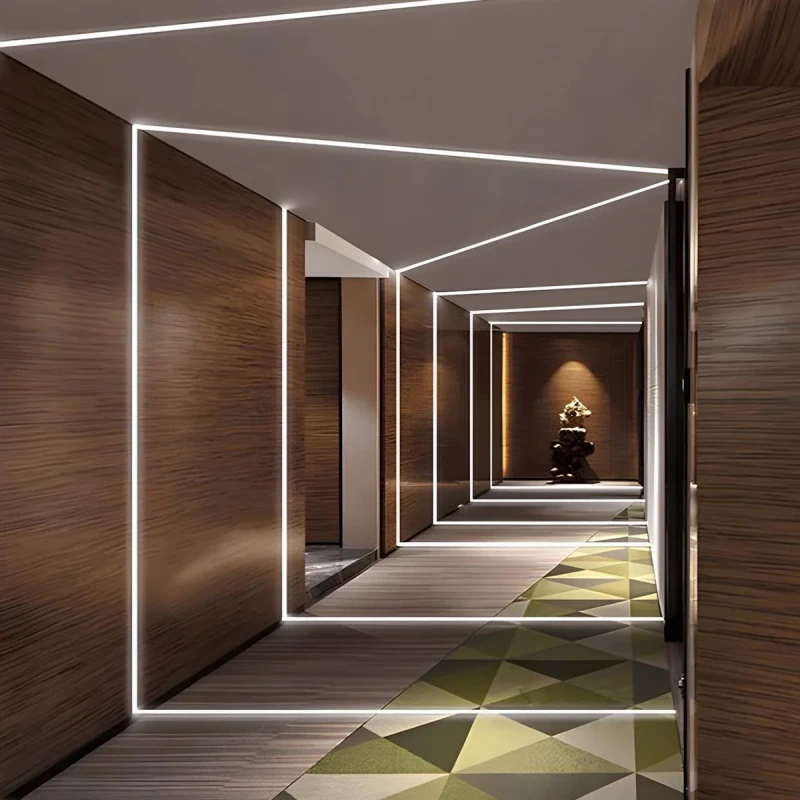
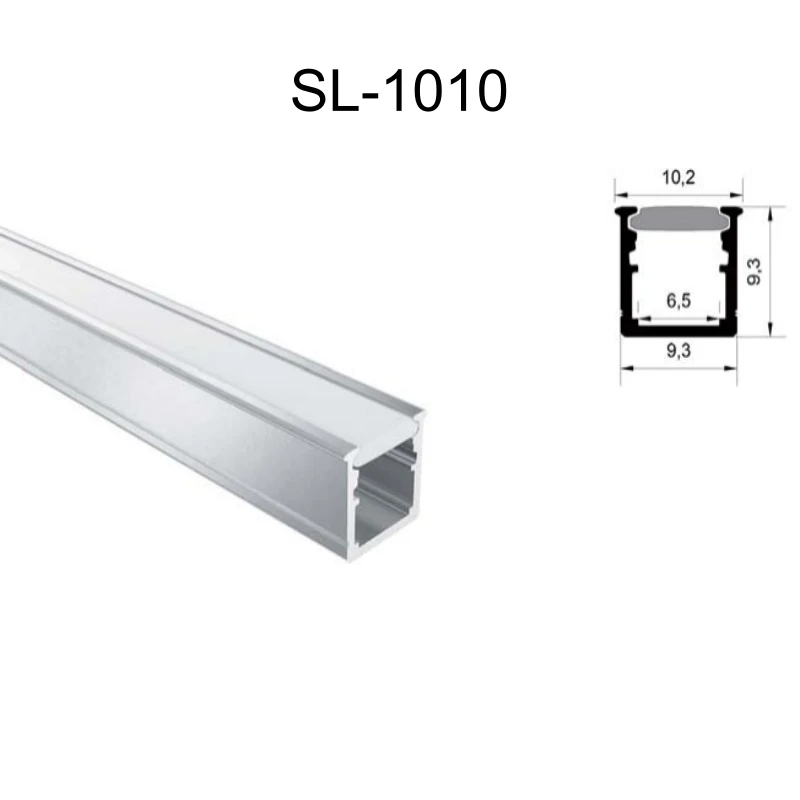
Zawieszone światło liniowe w otwartym biurze
W nowoczesnych biurach na otwartym planie zawieszone światła liniowe są często instalowane nad wspólnymi biurkami lub obszarami obiegu. Oprawy te zapewniają nie tylko funkcjonalne oświetlenie, ale także pomagają definiować strefy w przestrzeni bez granic. Wiszące światła wprowadzają rytm i głębię, dzięki czemu środowisko jest zarówno wydajne, jak i wizualnie wciągające.
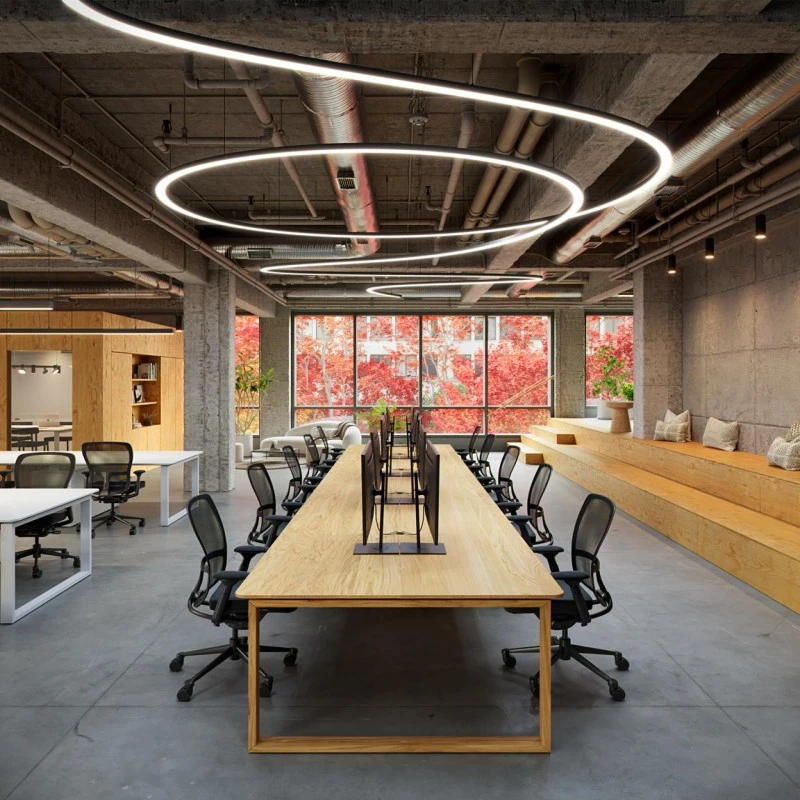
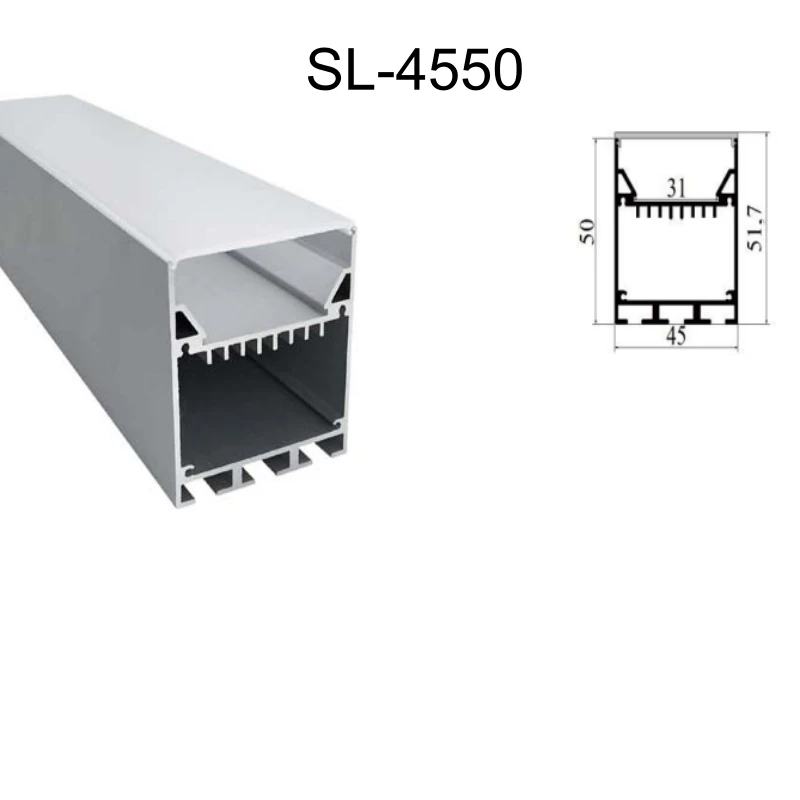
Światło liniowe montowane na powierzchni w korytarzu szpitalnym
W szpitalnych korytarzach, gdzie sufity są betonowe, a czas jest napięty, liniowe światła montowane natynkowo są niezawodnym rozwiązaniem. Zapewniają spójne, wysokie oświetlenie, które zapewnia bezpieczeństwo i widoczność, szczególnie w środowiskach operacyjnych 24/7. Instalacja jest prosta, a konserwacja jest prosta — idealne dopasowanie do infrastruktury opieki zdrowotnej.
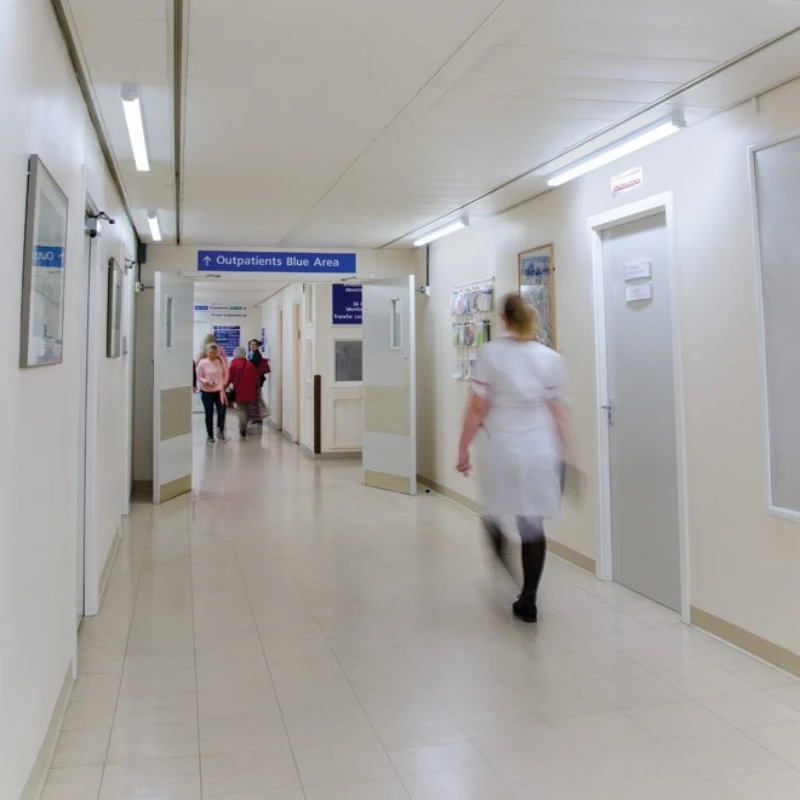
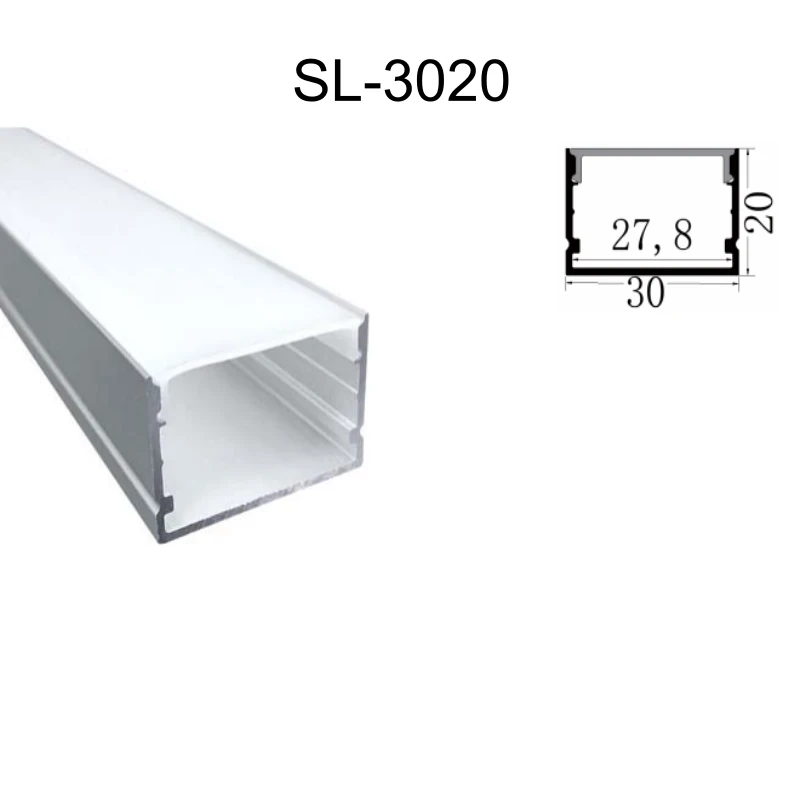
Nasza wiedza na temat profili liniowych LED do różnych typów montażu
Wybór właściwego Profil liniowy LED Nie chodzi tylko o jakość światła — chodzi o znalezienie rozwiązania, które idealnie pasuje do celów projektowych, metody instalacji i wydajności. W Signliteded łączymy głębię produktu z precyzją inżynierską, aby zaspokoić różnorodne potrzeby handlowe.
1. Szeroki wybór zastrzeżonych profili aluminiowych
Signliteled opracował wiele zastrzeżonych projektów profili aluminiowych, obejmujących instalacje wpuszczane, zawieszone i natynkowe. Profile te są specjalnie zaprojektowane, aby sprostać zarówno funkcjonalnym, jak i estetycznym wymaganiom, dając klientom elastyczne opcje bez uszczerbku na stylu czy wydajności.
2. Kompletne akcesoria montażowe
Dostarczamy pełny zestaw akcesoriów pasujących do każdego profilu, w tym kable zawieszenia, wsporniki montażowe, zaślepki, dyfuzory i złącza. Zapewnia to płynną instalację, idealne wyrównanie i spójne wizualne wykończenie w całym systemie oświetlenia.
3. Precyzyjnie dopasowane tablice świetlne
Wszystkie płyty LED są zaprojektowane tak, aby idealnie pasowały do każdego rozmiaru profilu, czy to jako sztywne płytki drukowane lub elastyczne taśmy LED. Opcje obejmują stały prąd zapewniający długotrwałą stabilność lub stałe napięcie dla uproszczonego okablowania, zapewniając optymalną wydajność w różnych warunkach projektowych.
4. Pełna możliwość dostosowywania
Wspieramy personalizację na każdym poziomie — od kształtu profilu i wymiarów po watowanie i metodę montażu. Niezależnie od tego, czy potrzebujesz unikalnego wytłaczania profilu, specjalnych poziomów wyjściowych, czy kompatybilności z wieloma montowaniami, nasz zespół dostarcza rozwiązania dostosowane do Twojej wizji projektu.

Od koncepcji do instalacji — mamy Cię w zasięgu ręki
W Signlited nie sprzedajemy tylko profili — dostarczamy kompletne, gotowe do zainstalowania rozwiązania liniowe LED. Niezależnie od tego, czy pracujesz nad ekskluzywną powierzchnią handlową, nowoczesnym biurem, czy projektem komercyjnym na dużą skalę, nasza wiedza inżynierska i elastyczna produkcja zapewniają dokładnie to, czego wymaga Twój projekt i instalacja.
Porozmawiajmy o Twoim projekcie
Podziel się z nami wymaganiami projektowymi, a nasz zespół zarekomenduje odpowiedni profil, metodę montażu i konfigurację oświetlenia. Dzięki naszym zastrzeżonym projektom, pełnemu wsparciu akcesoriów i opcjom dostosowywania, umożliwiamy wizję — na czas i zgodnie ze specyfikacją.

